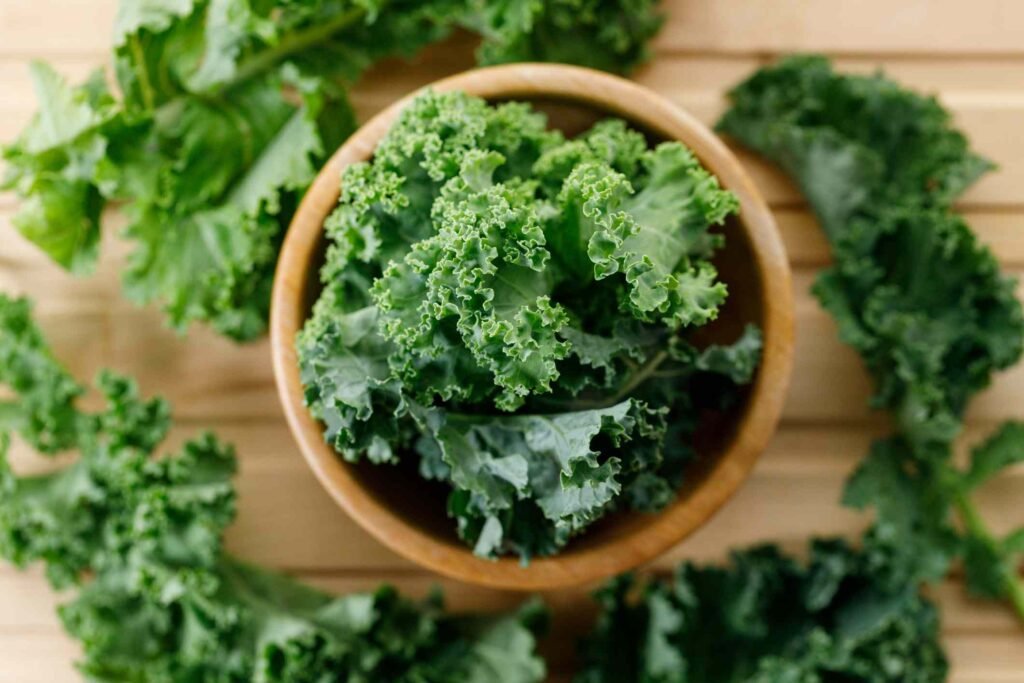Kale is known for its high levels of nutrients, including vitamins A, C, E, and K. A single cup of cooked kale contains 493 micrograms of vitamin K, which covers 410.8% of the Daily Value (DV).
Vitamin K plays essential roles in skeletal health, blood clotting, and many other important processes in the body, which is why it’s critical to make sure you’re hitting your recommended daily intake.
While kale is an excellent source, plenty of other foods contain more vitamin K per serving. Here are 7 foods that deliver more vitamin K than kale, plus tips for how to include them in your diet.
bhofack2 / Getty Images
- Vitamin K content: 889 micrograms, or 740.8% of the DV
- Health benefits: Spinach is one of the best sources of vitamin K you can eat, with a cooked cup covering more than 700% of your daily needs. Spinach is also packed with folate, vitamin A, magnesium, and the carotenoid antioxidants lutein and zeaxanthin, which protect against cellular damage and support eye health.
- How to use it: You can add raw spinach to salads, soups, grain bowls, and smoothies, or sauté spinach with garlic and olive oil for a quick and nutritious side dish.
Costache Hurgoi / Getty Image
- Vitamin K content: 572 micrograms, or 476.6% of the DV
- Health benefits: In addition to being an excellent source of vitamin K, Swiss chard provides nutrients essential for heart health. A cup of cooked Swiss chard provides 20% of your daily potassium needs and 35% of your daily magnesium needs. These nutrients are essential for healthy blood pressure management, and diets high in these minerals may reduce the risk of high blood pressure, protecting against heart disease.
- How to use it: Toss Swiss chard into soups, stews, and salads, or sauté it with olive oil and lemon. Swiss chard also makes a tasty low-carb substitute for wraps and burritos.
bhofack2 / Getty Images
- Vitamin K content: 609 micrograms per cooked cup, or 507.5% of the DV
- Health benefits: Collard greens are a nutrient-dense green that’s rich in fiber, calcium, vitamin K, and other essential nutrients. A cup of cooked collards delivers nearly 20% of your daily fiber needs and 24.9% of your calcium needs, making collards a good choice for supporting bone, gut, and heart health.
- How to use it: Add collard greens to grain bowls, salads, and stir-fries or cook them with onions, broth, and seasonings for a quick and healthy side dish.
K1tyara / Getty Images
- Vitamin K content: 530 micrograms per cooked cup, or 441.6% of the DV
- Health benefits: Turnip greens aren’t as popular as other greens, like kale, but they provide an impressive amount of nutrients and make a smart addition to your diet. They’re especially high in vitamin C, which is necessary for collagen production, immune health, and iron absorption. A cup of cooked turnip greens provides 43.8% of your daily vitamin C needs. Turnip greens are also high in folate, vitamin A, and other essential nutrients.
- How to use it: Turnip greens are delicious steamed or sautéd with them with garlic and olive oil. They can also be mixed into soups and stews for a boost of nutrition.
VU PHAM VAN / Getty Images
- Vitamin K content: 830 micrograms per cooked cup, or 691.6% of the DV
- Health benefits: Along with a massive dose of vitamin K, mustard greens contain a variety of protective plant compounds, such as carotenoid antioxidants, like β-carotene, lutein, violaxanthin, and neoxanthin, which have powerful cellular-protective properties.
- How to use it: Mustard greens have a spicy taste and can be enjoyed raw in salads or on sandwiches. You can also add cooked mustard greens to dishes like grain bowls and soups.
Promo_Link / Getty Images
- Vitamin K content: 850 micrograms per 3-ounce serving, or 708% of the DV
- Health benefits: Natto is a traditional Japanese food made from fermented soybeans. It’s packed with vitamin K and is an excellent source of fiber, protein, calcium, magnesium, and zinc. Natto is an especially healthy choice for those following vegan and vegetarian diets, as it provides 34 grams of plant-based protein per cup.
- How to use it: Natto can be used as a plant-based meat substitute in dishes like stir-fries and can be enjoyed on top of rice or toast for a boost of filling protein.
Kinga Krzeminska / Getty Images
- Vitamin K content: 697 micrograms per 3-ounce serving, or 580.8% of the DV
- Health benefits: Beet greens contain an impressive array of nutrients, including iron, potassium, and vitamin C. Beet greens are also high in nitrates, which are compounds that help relax blood vessels, supporting healthy blood pressure.
- How to use it: You can sauté beet greens with garlic and olive oil, blend them into smoothies, or add them to soups and stir-fries.
Kale is an excellent source of vitamin K, but many other foods pack more of this essential nutrient.
Spinach, Swiss chard, collard greens, turnip greens, beet greens, mustard greens, and natto, all pack more vitamin K per serving than kale and offer a variety of other health-promoting vitamins, minerals, and protective plant compounds.
Try incorporating a variety of vitamin K-rich foods into your meals to ensure you’re meeting your daily needs.

